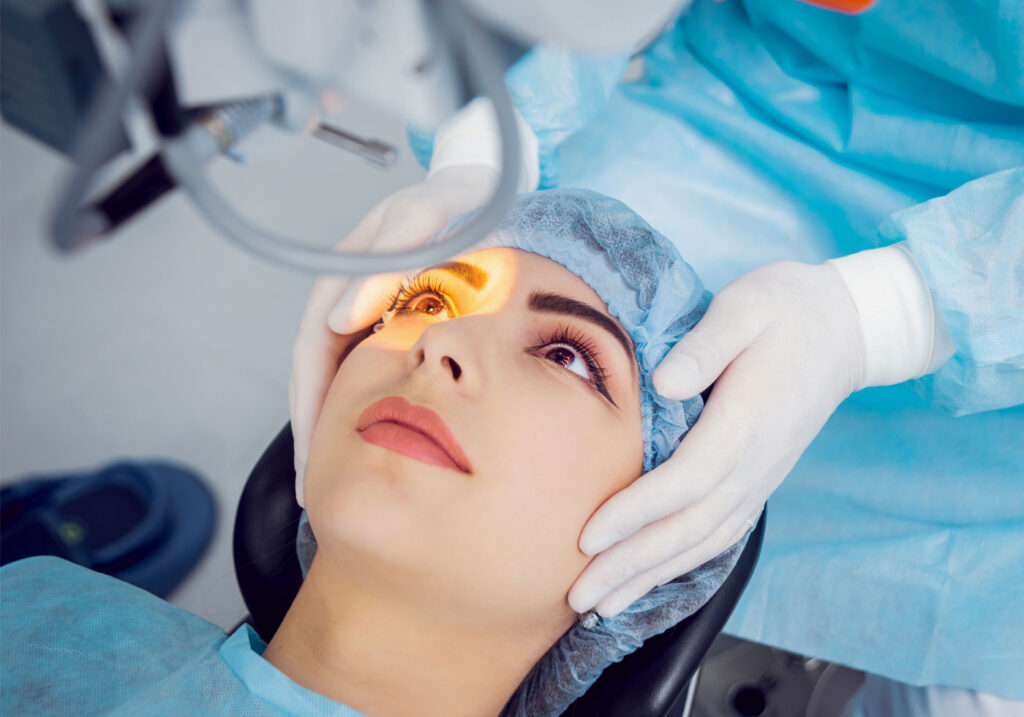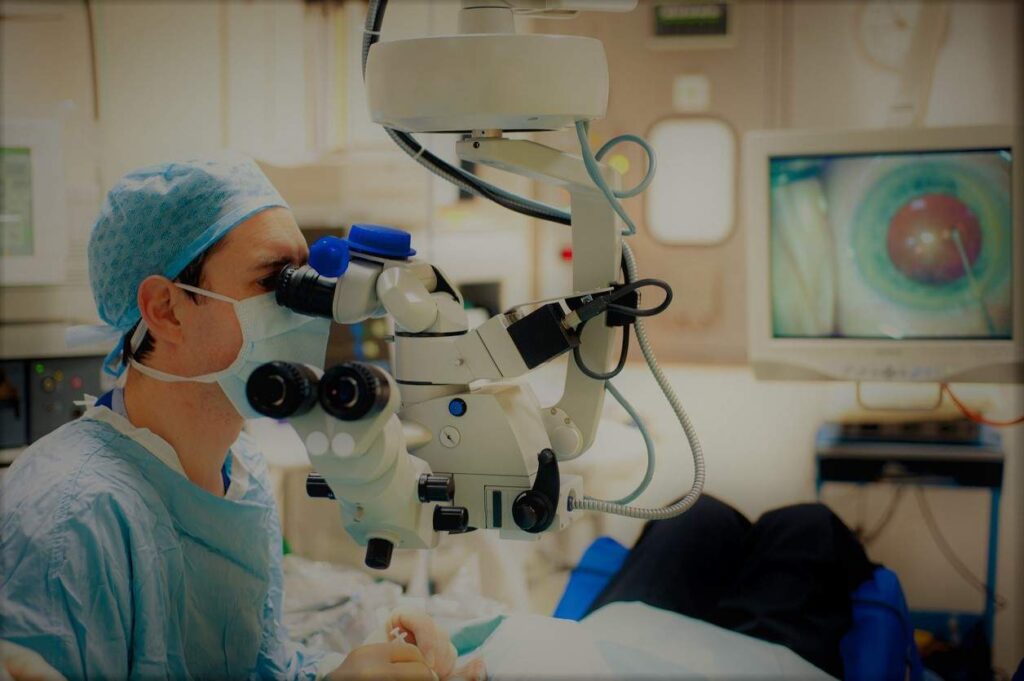The retina is a vital part of our visual system, playing a crucial role in our ability to see clearly. It is responsible for capturing light and converting it into electrical signals that the brain can interpret as images. When the retina is damaged or affected by disease, it can lead to various vision problems, including blurriness and even complete vision loss.
Understanding the Retina and Its Function
Before delving into the realm of retinal damage symptoms and treatments, it is important to have a basic understanding of the retina and its function. The retina is a thin layer of tissue located at the back of the eye, lining the inner surface of the eyeball. It consists of millions of light-sensitive cells, known as photoreceptors, which include two main types: rods and cones.
Rods are responsible for peripheral vision and help us see in low-light conditions, whereas cones are responsible for central vision and color perception. These photoreceptor cells work together to transmit visual information to the brain via the optic nerve.
The retina is a fascinating structure that plays a crucial role in our ability to see and perceive the world around us. It is not just a passive layer of tissue, but a complex network of cells and processes that enable us to experience the wonders of vision.
The Role of the Retina in Vision
Without a properly functioning retina, our visual perception would be severely impaired. The retina acts as a gateway for light, absorbing it and converting it into electrical signals that can be processed by the brain. This process occurs through a complex series of reactions within the photoreceptor cells, ultimately resulting in the formation of a clear and detailed image.

Imagine the retina as a sophisticated camera, capturing the light that enters our eyes and transforming it into meaningful visual information. It is like a master artist, meticulously painting a vivid picture on the canvas of our minds.
Each photoreceptor cell in the retina has a specific role to play, contributing to the overall visual experience. The rods, with their high sensitivity to light, allow us to navigate in dimly lit environments, such as when stargazing on a clear night. On the other hand, the cones provide us with the ability to perceive colors in all their vibrant glory, allowing us to appreciate the beauty of a rainbow or the hues of a blooming flower.
Common Retinal Disorders and Their Symptoms
There are several retinal disorders that can affect the normal functioning of the retina. These conditions can arise due to various factors, including age, genetic predisposition, and underlying health conditions. Some common retinal disorders include:
Macular degeneration:
This age-related condition affects the macula, the central part of the retina. It can lead to a loss of central vision and make tasks such as reading or recognizing faces difficult. Macular degeneration is a significant concern, especially for older individuals, as it can significantly impact their quality of life.
Retinal detachment:
This occurs when the retina separates from the layers beneath it. Symptoms of retinal detachment include sudden flashes of light, floaters in the field of vision, and a curtain-like shadow over the visual field. It is a medical emergency that requires immediate attention to prevent permanent vision loss.
Diabetic retinopathy:
A complication of diabetes, diabetic retinopathy occurs when high blood sugar levels damage the blood vessels in the retina. It can cause blurry or distorted vision and, if left untreated, lead to complete vision loss. Regular eye examinations are essential for individuals with diabetes to detect and manage this condition early on.
These are just a few examples of retinal disorders that can have a profound impact on an individual’s vision and overall well-being. It is important to be aware of the symptoms associated with these retinal disorders and seek prompt medical attention if any visual changes or abnormalities are noticed.
By understanding the intricacies of the retina and the potential challenges it may face, we can appreciate the remarkable complexity of our visual system. The retina is not merely a passive receiver of light, but a dynamic and vital component that allows us to perceive the world in all its splendor.
The Importance of Early Detection in Retinal Diseases
Retinal diseases can have a significant impact on vision, making early detection crucial for preserving and restoring eyesight. Regular eye examinations play a vital role in identifying any retinal abnormalities and allowing ophthalmologists to initiate appropriate treatment plans.
Retinal diseases encompass a range of conditions that affect the retina, the light-sensitive tissue at the back of the eye. These conditions can include age-related macular degeneration, diabetic retinopathy, retinal detachment, and retinitis pigmentosa, among others.
Regular Eye Examinations: A Preventive Measure
Scheduling regular eye examinations with an ophthalmologist is a proactive measure that can help prevent and minimize the impact of retinal diseases. Ophthalmologists are highly trained medical professionals who specialize in diagnosing and treating eye conditions.
During a comprehensive eye examination, the ophthalmologist will assess various aspects of eye health, including the retina. Specialized equipment, such as an ophthalmoscope or OCT (optical coherence tomography) scanner, may be used to visualize the retina in detail and identify any abnormalities.
One common technique used during eye examinations is pupil dilation. By applying eye drops to dilate the patient’s pupils, the ophthalmologist can obtain a better view of the retina. This allows for a more thorough assessment of the retina’s condition and can help detect early signs of retinal diseases.

Recognizing the Early Signs of Retinal Diseases
Being aware of the early signs and symptoms of retinal diseases is crucial in seeking timely medical intervention. While some retinal diseases may initially present with no noticeable symptoms, there are common signs that individuals should be mindful of:
- Blurred or distorted vision: Objects may appear fuzzy or distorted, making it difficult to see details clearly.
- Floaters: These are tiny specks that appear to float in the field of vision. They can be dark or transparent and may move when the eyes move.
- Flashes of light: Seeing brief flashes or flickering lights, especially in peripheral vision, can be a sign of retinal issues.
- Loss of peripheral or central vision: A gradual or sudden loss of side vision or central vision can indicate a retinal problem.
If any of these symptoms are experienced, it is imperative to consult an ophthalmologist promptly to determine the underlying cause and initiate appropriate treatment. Early intervention can significantly improve the chances of preserving vision and preventing further deterioration.
In conclusion, early detection of retinal diseases through regular eye examinations is essential for maintaining healthy vision. By staying proactive and being aware of the early signs of retinal diseases, individuals can take the necessary steps to protect their eyesight and seek timely medical intervention when needed.
Non-Surgical Retinal Treatments
Not all retinal diseases require surgical intervention. In many cases, non-surgical treatments can effectively manage the disease and preserve vision. These treatments can include medications and lifestyle changes that positively impact retinal health.
Medication Options for Retinal Diseases
Depending on the specific retinal disease, medications may be prescribed to slow down disease progression, reduce inflammation, or manage associated complications. Common medications used in retinal disease treatment include:
- Anti-VEGF drugs: These drugs inhibit the growth of abnormal blood vessels in conditions like age-related macular degeneration and diabetic retinopathy.
- Steroids: Steroid medications can help reduce inflammation and swelling in the retina.
- Immunosuppressants: In certain autoimmune retinal diseases, medications that suppress the immune response may be prescribed.
Lifestyle Changes and Their Impact on Retinal Health
Adopting a healthy lifestyle can positively impact retinal health and help manage retinal diseases. Some lifestyle changes that may be recommended by ophthalmologists include:
- Eating a balanced diet rich in antioxidants and omega-3 fatty acids, which can benefit retinal health.
- Quitting smoking, as smoking is known to increase the risk of retinal diseases.
- Protecting the eyes from excessive ultraviolet (UV) light exposure by wearing sunglasses with UV protection.
- Maintaining a healthy weight and managing underlying health conditions, such as diabetes and hypertension, which can impact retinal health.
Surgical Interventions for Retinal Diseases
In certain cases, surgical interventions may be necessary to treat retinal diseases and restore vision. These interventions involve procedures that directly target the retina and aim to repair or remove damaged tissue.
Vitrectomy: Procedure and Recovery
Vitrectomy is a surgical procedure performed to remove the gel-like substance (vitreous) present inside the eye. This procedure is commonly used to treat conditions such as retinal detachment or macular pucker.

During vitrectomy, the ophthalmologist makes small incisions in the eye and inserts small instruments to remove the vitreous and any scar tissue present. Once the procedure is complete, a gas or silicone oil may be injected to replace the removed vitreous, providing support to the retina as it heals.
Recovery from vitrectomy may involve wearing an eye patch, using medicated eye drops, and avoiding certain activities that could strain the eye. Regular follow-up examinations with the ophthalmologist are important to monitor the healing process and ensure optimal outcomes.
Laser Surgery for Retinal Repair
Laser surgery techniques, such as photocoagulation and photodynamic therapy, can be effective in treating specific retinal conditions. These procedures utilize focused laser beams to target and seal leaking blood vessels, or to destroy abnormal tissue.
Photocoagulation is commonly used to treat conditions like diabetic retinopathy and retinal tears. It works by applying laser energy to cauterize leaking blood vessels or seal retinal tears, preventing further damage or detachment.
Photodynamic therapy, on the other hand, involves the injection of a light-sensitive drug into the bloodstream. The drug selectively accumulates in abnormal blood vessels, and when exposed to laser light, it activates and causes damage to these vessels while sparing the surrounding healthy tissue.
The Future of Retinal Treatments
The field of retinal treatments is continuously evolving, with researchers exploring innovative approaches to restore or enhance vision. Two promising areas of research include advances in retinal prosthesis and gene therapy/stem cell research.
Advances in Retinal Prosthesis
Retinal prosthesis, also known as a bionic eye, is a technology that aims to restore vision in individuals with severe retinal diseases or retinal degeneration. This technology involves the implantation of electronic devices that stimulate the remaining viable retinal cells, allowing visual information to be transmitted to the brain.
Ongoing research and development in the field of retinal prosthesis hold promise for significant advancements in the coming years, potentially improving the quality of life for individuals with retinal diseases.
Gene Therapy and Stem Cell Research in Retinal Treatment
Gene therapy and stem cell research offer potential avenues for the treatment of retinal diseases. These innovative approaches involve manipulating genes or using stem cells to repair or replace damaged retinal tissue.
Gene therapy aims to introduce healthy genes into the retina to compensate for genetic mutations that cause retinal diseases. Stem cell research, on the other hand, focuses on harnessing the regenerative potential of stem cells to replace or repair damaged retinal cells.
While these treatments are still in the experimental stages, they hold promise for the future, offering hope for improved outcomes in the treatment of retinal diseases.
In conclusion, an understanding of the retina and its function is crucial in comprehending the importance of effective retinal treatments. Early detection, non-surgical interventions, and surgical techniques all play key roles in managing retinal diseases and preserving vision. As technology continues to advance, the future of retinal treatments looks promising, with potential breakthroughs on the horizon. By staying informed and regularly seeking eye examinations, individuals can take proactive steps towards maintaining optimal retinal health and ensuring the best possible outcomes for their vision.
More to read: The Future of Vision with Advanced Retinal Treatments

